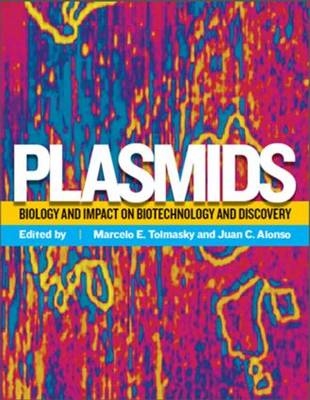
Plasmids
American Society for Microbiology (Verlag)
978-1-55581-897-5 (ISBN)
Marcelo E. Tolmasky is a Professor at the Department of Biology, California State University, Fullerton, and the Director of the Center for Applied Biotechnology Studies. He did his PhD at the Fundacion Instituto Leloir under the mentorship of Luis F. Leloir and his postdoctoral training in Jorge H. Crosa's laboratory at the Oregon Health & Sciences University, where he studied virulence and antibiotic resistance plasmids in Gram-negatives. His current research focuses on several basic and applied aspects of plasmid-mediated multidrug resistance and virulence. He was a coeditor of the book Enzyme-Mediated Resistance to Antibiotics: Mechanisms, Dissemination, and Prospects for Inhibition (ASM Press).
Contributors
Preface
I. Introduction
1. Historical Events That Spawned the Field of Plasmid Biology
II. Plasmid Replication Systems and Their Control
2. Iteron Plasmids
3. Mechanisms of Theta Plasmid Replication
4. Plasmid Rolling-Circle Replication
5. Replication and Maintenance of Linear Phage-Plasmid N15
6. Plasmid Replication Control by Antisense RNAs
7. Topological Behavior of Plasmid DNA
III. Plasmid Maintenance, Transfer and Barriers
8. Plasmid Partition Mechanisms
9. Resolution of Multimeric Forms of Circular Plasmids and Chromosomes
10. Conditional Activation of Toxin-Antitoxin Systems: Postsegregational Killing and Beyond
11. The Interplay between Different Stability Systems Contributes to Faithful Segregation: Streptococcus pyogenes pSM19035 as a Model
12. The CRISPR-Cas Immune System and Genetic Transfers: Reaching an Equilibrium
13. Plasmid Diversity and Adaptation Analyzed by Massive Sequencing of Escherichia coli Plasmids
14. Conjugation in Gram-Positive Bacteria
15. Mobilizable Rolling-Circle Replicating Plasmids from Gram-Positive Bacteria: A Low-Cost Conjugative Transfer
IV. Specific Plasmid Systems
16. The Plasmid Mobilome of the Model Plant Symbiont Sinorhizobium meliloti: Coming up with New Questions and Answers
17. The Agrobacterium Ti Plasmids
18. The Influence of Biofilms in the Biology of Plasmids
19. The Partitioning and Copy Number Control Systems of the Selfish Yeast Plasmid: An Optimized Molecular Design for Stable Persistence in Host Cells
20. Plasmids from Euryarchaeota
V. Plasmid Ecology and Evolution
21. The Plasmidome of Firmicutes: Impact on the Emergence and the Spread of Resistance to Antimicrobials
22. Plasmid-Mediated Antimicrobial Resistance in Staphylococci and Other Firmicutes
23. Plasmid Detection, Characterization, and Ecology
24. Plasmid-Mediated Antibiotic Resistance and Virulence in Gram-Negatives: The Klebsiella pneumoniae Paradigm
25. Plasmid-Mediated Quinolone Resistance
VI. Specialized Functions Mediated By Plasmids
26. Plasmid-Mediated Tolerance Toward Environmental Pollutants
27. Virulence Plasmids of Spore-Forming Bacteria
28. Virulence Plasmids of Nonsporulating Gram-Positive Pathogens
29. Plasmid-Encoded Iron Uptake Systems
VII. Plasmids as Genetic Tools
30. DNA Assembly Tools and Strategies for the Generation of Plasmids
31. Plasmids as Tools for Containment
32. Mining Environmental Plasmids for Synthetic Biology Parts and Devices
33. Using Plasmids as DNA Vaccines for Infectious Diseases
34. Plasmid Biopharmaceuticals
Index
| Reihe/Serie | ASM Books |
|---|---|
| Sprache | englisch |
| Maße | 216 x 277 mm |
| Gewicht | 1905 g |
| Themenwelt | Naturwissenschaften ► Biologie ► Biochemie |
| Naturwissenschaften ► Biologie ► Genetik / Molekularbiologie | |
| Naturwissenschaften ► Biologie ► Mikrobiologie / Immunologie | |
| Naturwissenschaften ► Physik / Astronomie ► Angewandte Physik | |
| ISBN-10 | 1-55581-897-8 / 1555818978 |
| ISBN-13 | 978-1-55581-897-5 / 9781555818975 |
| Zustand | Neuware |
| Haben Sie eine Frage zum Produkt? |
aus dem Bereich


